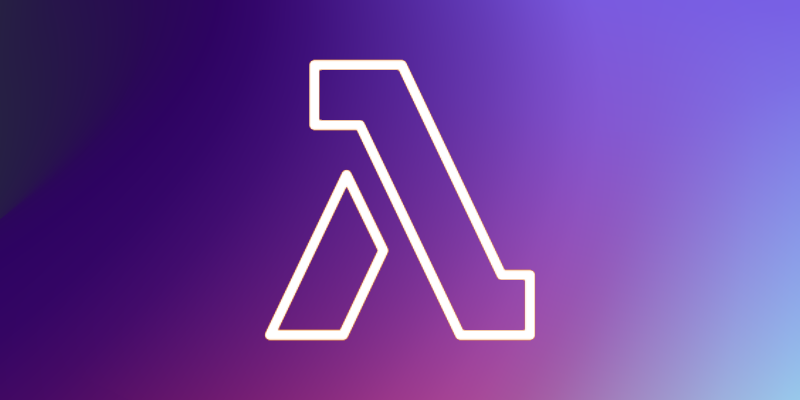
|
Today, we announce two new strengthens AWS Lambda, which make developers easier to create and tune applications without servers in their local development: consoles to integrate IDE and remote tuning. These new abilities build on our recent improvisations on Lambd’s developmental experience, included an improved experience in the console and improved local integrated development (IDE) initiated at the end of 2024.
When creating applications without servers, developers usually focus on two areas to streamline their workflow: setting up local development and cloud tuning options. While developers can bring functions from the console to their IDE, they are looking for ways to make this process more efficient. In addition, because the functions interact with different AWS services in the cloud, developers want the improved tuning to identify and solve the developmental cycle earlier, reducing their relying on local emulation and helping them optimize their development process.
Console to integrate
To deal with the first challenge, we have introduced a console for the integration of IDE that streamlines the workflow from the AWS management into the Visual Studio (VS code) code. This new ability adds Open in the visual studio code The Lambda console button, which allows developers to quickly move from browser’s function and adjust it in their IDE, eliminating time consuming adjustment processes for local development.
The console integration automatically processes the setting process and checks the installation of the VS code and the AWS tool for the VS code. For developers who have already configured, the Immoredelly button opens its function code in the VS code, so they can continue to edit and deploy changes back to Lambda in seconds. If the VS code is not installed, it will direct the development to the download page and if the AWS tool is missing, this is a quick installation.
You want to use the console to the IDE, look for Open in the VS code Button either in a pop -up window, after creating a new function or Code Card of existing Lambda functions. After selecting, the VS code opens automatically (AWS tool installs if necessary). Unlike the environmental console, you now have access to full development with an integrated terminal – significant improvements for development that need to manage packages (NPM installation, PIP installation), start tests or use development tools such as linters and format. You can edit the code, add new files/folders, and any changes you make will start the automatic commitment prompt. When you decide to deploy, AWS Toolkit automatically releases your function to your AWS account.
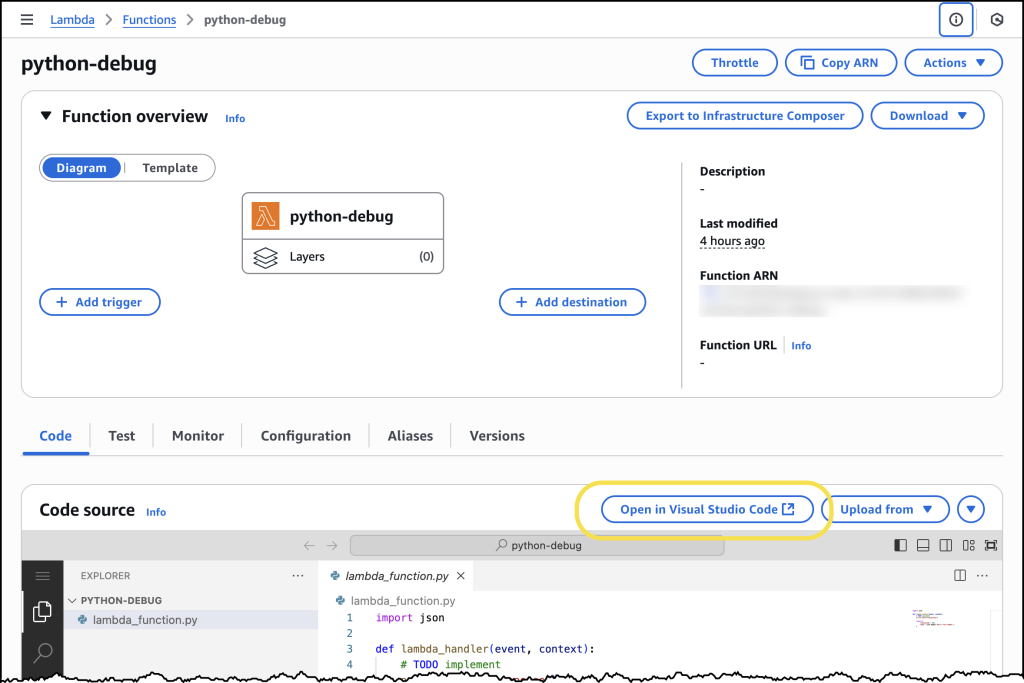
Tuning
Once developers have their functions in their IDE, they can use remote tuning to debug Lambda functions deployed in their AWS directly from VS code. The key advantage of remote tuning is that it allows developers to tune the functions running in the cloud while integrated with other AWS services, allowing faster and more reliable development.
With remote tuning, developers can tune their functions with full access to Amazon Virtual Private Cloud (VPC) Sources and AWS Identity and Access Management (AWS IAM), which removes the gap between local development and cloud design. For example, when tuning the Lambda function, which interacts with the Amazon Relational Database Service (AMAZON RDS) database, developers can now tune the cloud feature in seconds before spending time settings.
We start with remote tuning is simple. Developers can choose the Lambda in VS code and allow tuning in seconds. The AWS Toolkit for the VS code automatically downloads the function code, creates a secure tuning connection, and allows you to set the interrupt point. After tuning, AWS Toolkit Pro VS code automatically cleans the tuning configuration to have any impact on production operation.
Let’s try
To take the remote tuning for rotation, the basic function of “Hello World” began in Python. I have previously created the feature using the AWS Management Console Pro AWS Lambda. Using AWS for VS code I can go to my function in Explore breaded. When I float over my function, I can right-click the CTRL-click in Windows) and download the code to your local computer and edit the code in my IDE. Save the file asks me to decide if I want to deploy the latest changes in the lamba.
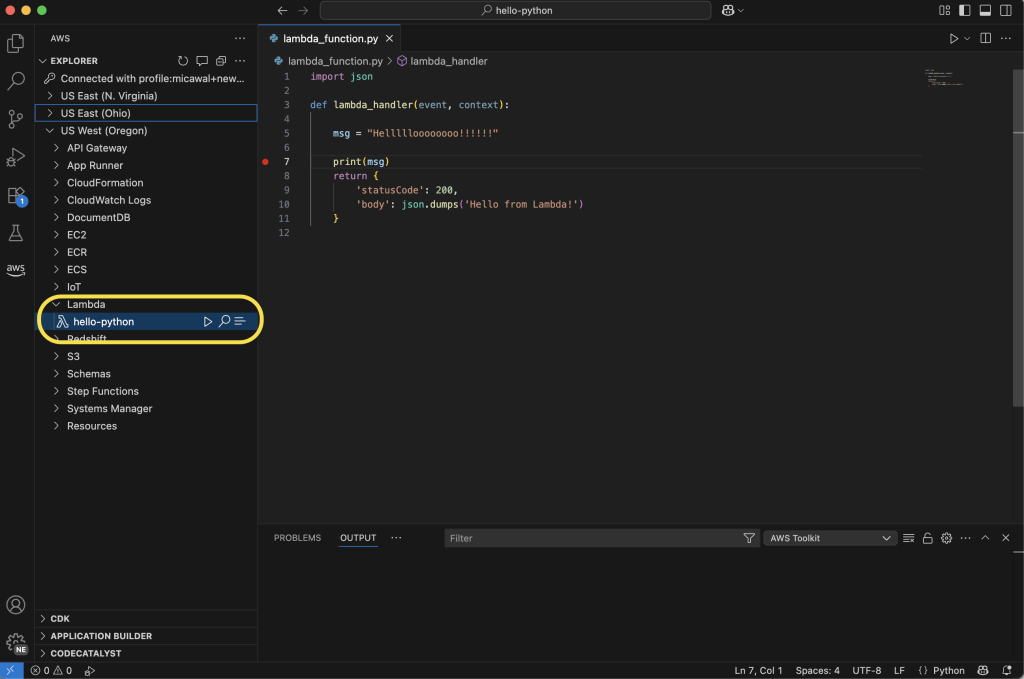
From here I can select the game icon to open Remote Invoke Configuration page for my function. This dialog now displays a Tuning The possibility I configure to point to my local copy of my code of functions. Before selecting RemoteI can set the interruption points where I want my code to pause for inspection.
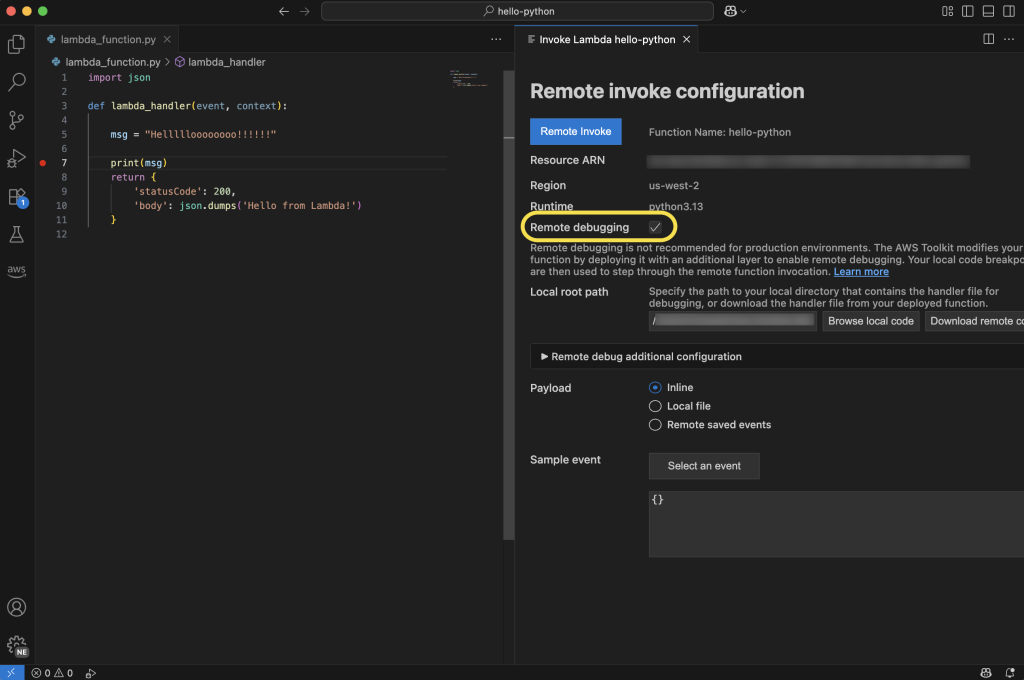
My code will be launched in the cloud after invoking and I can watch its status in real time in VS code. In the following screen frame you can see the turning point in the print state. My function pauses the design at this point of my code and I can check similar local values of variables before continuing to the next point of interruption or enter the code line by line.
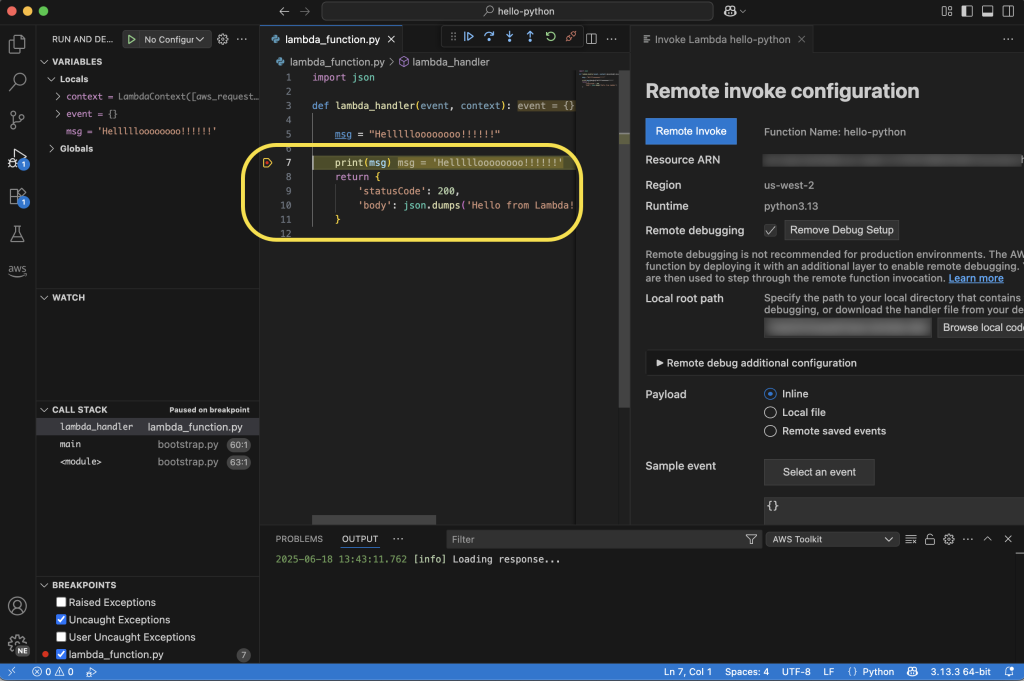
Here you can see that the way it was chosen to enter the code, and as I go through line by line, I see the context and the local and global variables displayed on the left side of the IDE. In addition, I can watch the protocols in Exit Card at the bottom of the IDE. As I go through, I will see the reports of the protocol or the output messages from making my fun in real time.
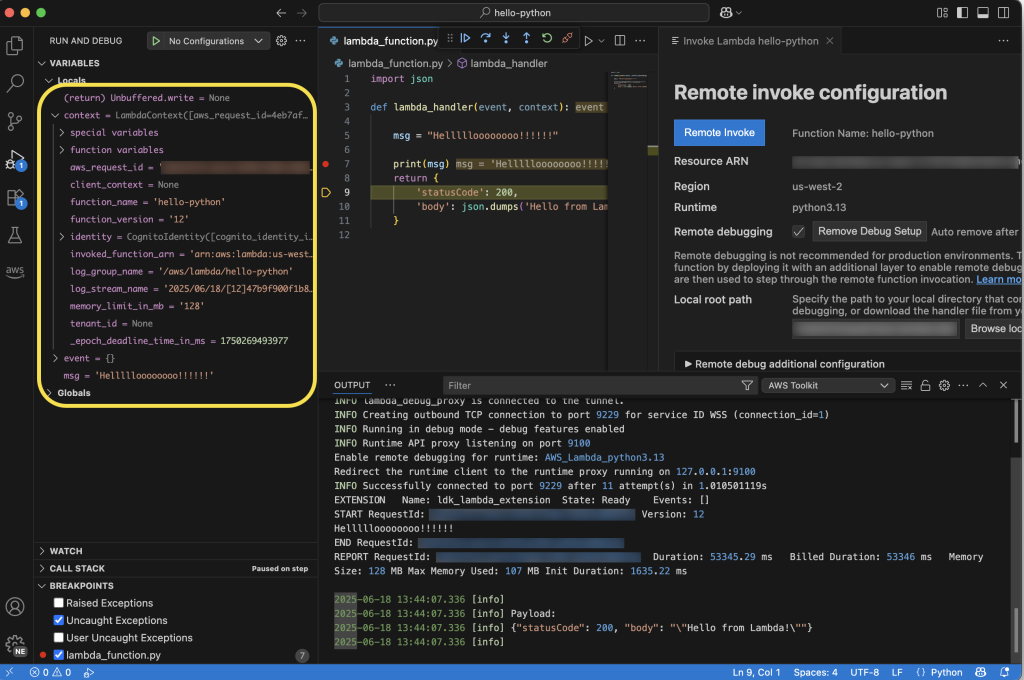
Improved development workflow
These new abilities work together to create a more efficient development experience. Developers can start in the console, quickly switch to the VS code using the console to integrate IDE, and then tune their function running in the cloud by means of remote tuning. This workflow eliminates the need to switch between multiple tools and shores and helps developers to quickly identify and repair.
Now available
You can start using these new features via AWS Management Console and VS code with AWS for VS (V3.69.0 or later). The console integration into IDE is available in all AWS commercial regions where Lambda is available, with the exception of AWS Govcloud (USA) regions. For more information, see Lambda and AWS Toolkit for VS Code documentation. If you want to learn more about the abilities of remote tuning, included AWS regions in which it is available, visit the AWS Toolkit for the VS Code and Lambda documentation.
The consoles and remote tuning are available to you without additional costs. With remote debug, you only pay for the standard Lambda execution costs during tuning. When starting, the remote tuning will support Python, Node.js and Java Runtime with plans to extend support to other Runtims in the future.
These improvements will restore a significant step forward to simplify the development experience without servers, which means that developers can build and tune Lambda more efficiently than ever before.

